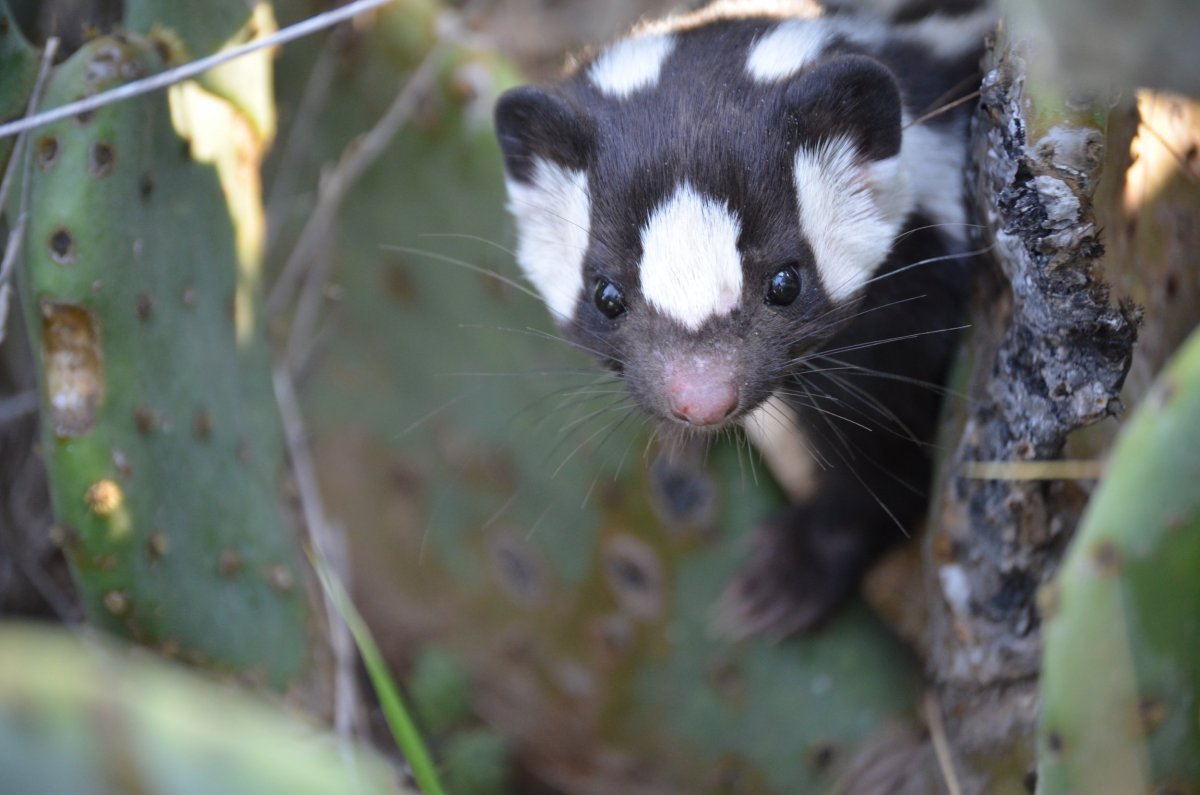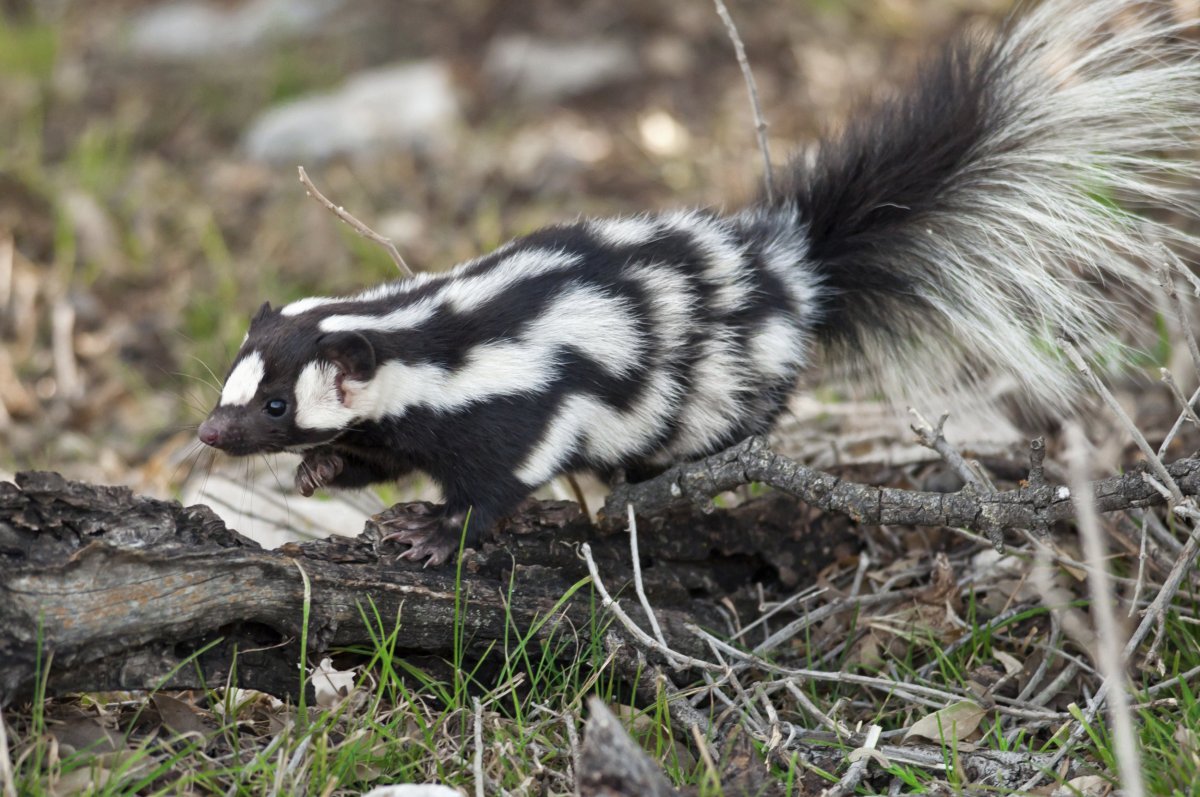
A tiny species of skunk that does handstands to make itself look threatening evolved as a result of climate change during the Pleistocene Ice Age a million years ago—not from the geographical barriers normally associated with the division of species.
Western spotted skunks are tiny, weighing just two pounds and measuring up to 18 inches in length. They are found across western U.S and Mexico and can live in a huge variety of climates: "One of the reason we're interested in this species is it exists from the Sonoran desert, to the temperate rainforest of British Columbia to Wyoming, so the habitats and the climates in which they live are quite diverse," Adam Ferguson, from the Field Museum in Chicago, tells Newsweek.

Ferguson is lead author of a new study, published in the journal Ecology and Evolution. In it, he looks at how the spotted skunk ended up in such vastly different environments—looking at the factors that would have led to this dispersal.
Researchers analyzed the DNA of 97 spotted skunks from different regions and climates in the U.S. They discovered the species could be divided into three clades, or genetic sub-divisions. But these clades could not be linked to key geographic barriers that would normally lead to their emergence.
"The differences between the clades didn't correspond to any well-known geographic barriers that do exist for other taxa," Ferguson says. "For example, striped skunks west of the Sierra Madre Mountains are genetically different to those on the eastern side of the mountains. So those are very early evolutionary factors where these mountains were there before. But for striped skunks, there was a genetic subdivision, but for spotted skunks there was not.
"The same mountain that acted as a barrier for gene flow for one species of skunk doesn't appear to have been doing so for the spotted skunk."
The team created a model to show where the spotted skunks exist now, then developed an "ideal climate envelope" where conditions would have been right for the species to thrive. They then projected this model into the past to look for periods when pockets of suitable conditions would have emerged.
During the Pleistocene Ice Age (2,600,000 to 11,700 years ago), North America was almost entirely covered by glaciers. As glaciers retreated and expanded, patches of land suitable for spotted skunks emerged.

In the study, scientists showed distinct patterns relating to glacier retreat and the emergence of climate envelopes. The skunks would have been isolated from other populations by patches of unsuitable climates—and it was this that appears to have led to the emergence of the genetic subdivisions.
"Based on our timing estimates and climate models it appears that the three genetic subdivisions were best explained by isolation into distinct climate refugia [envelopes] rather than separation by much older, yet well-characterized geographic barriers," Ferguson says.
How climate change affected species in the past provides scientists with an insight into how they may fare under future global conditions. "We now have a model to show the conditions that best suit spotted skunks today. Just like we projected these models into the past, we could project them into the future under different climate scenarios," Ferguson says.
Uncommon Knowledge
Newsweek is committed to challenging conventional wisdom and finding connections in the search for common ground.
Newsweek is committed to challenging conventional wisdom and finding connections in the search for common ground.
About the writer
Hannah Osborne is Nesweek's Science Editor, based in London, UK. Hannah joined Newsweek in 2017 from IBTimes UK. She is ... Read more
To read how Newsweek uses AI as a newsroom tool, Click here.








